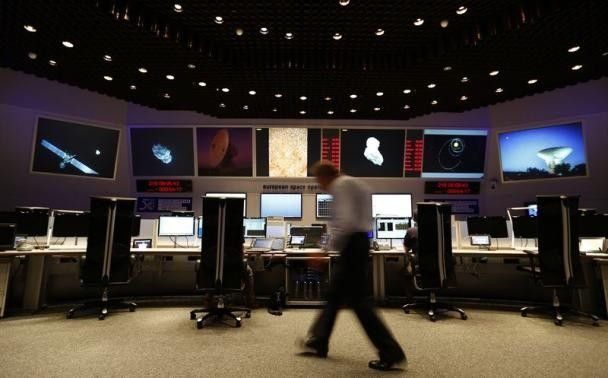Spacecraft Rosetta Makes Historic Meeting With Comet 67P/CG After Decade Long Chase[Watch Video]

This is a story of success. A brand new chapter just started in solar system exploration.
After a long journey that lasted for a decade, a European spacecraft has become the first in the history to have a tête a tête with a comet.
According to the report by Science Daily, the European Space Agency’s billion-euro Rosetta spacecraft finally met up with comet 67P/Churyumov–Gerasimenko.
Comet 67P/Churyumov-Gerasimenko and Rosetta presently lie 405 million km from Earth, it is around half way between the orbits of Jupiter and Mars, speeding towards the inner solar system at nearly 55,000 km per hour.
Comets can be defined as the primitive building blocks of the solar system which probably played important role to 'seed' Earth with water and with the other ingredients for life. Till date, lot of questions about comet found no answer. But now, with Rosetta working, it would most likely be possible to find out many secrets about comet in near future.
"After ten years, five months and four days travelling towards our destination, looping around the Sun five times and clocking up 6.4 billion kilometers, we are delighted to announce finally 'we are here'," said Jean-Jacques Dordain, ESA's Director General. “Europe’s Rosetta is now the first spacecraft in history to rendezvous with a comet, a major highlight in exploring our origins. Discoveries can start.”
As explained by The Guardian , the comet is in a 6.5-year elliptical orbit, which comes within the orbits of Mars and Earth and backs out to beyond Jupiter.
Reports suggest that Rosetta will be with the comet for over a year while they swing around the Sun and back out towards Jupiter again.
"Today's achievement is a result of a huge international endeavour spanning several decades," said Alvaro Giménez, ESA's Director of Science and Robotic Exploration.
As of now, Rosetta is just 100 km from the comet's surface, but within coming six weeks, it will be able to describe two triangular-shaped trajectories in front of the comet, first at a distance of 100 km followed by another at 50 km.
According to Matt Taylor, ESA's Rosetta project scientist, Rosetta will continue to interact with the comet till it gets its closest approach which is supposed to be on August 2015 and beyond in order to provide in depth insight and real time experiences.





















